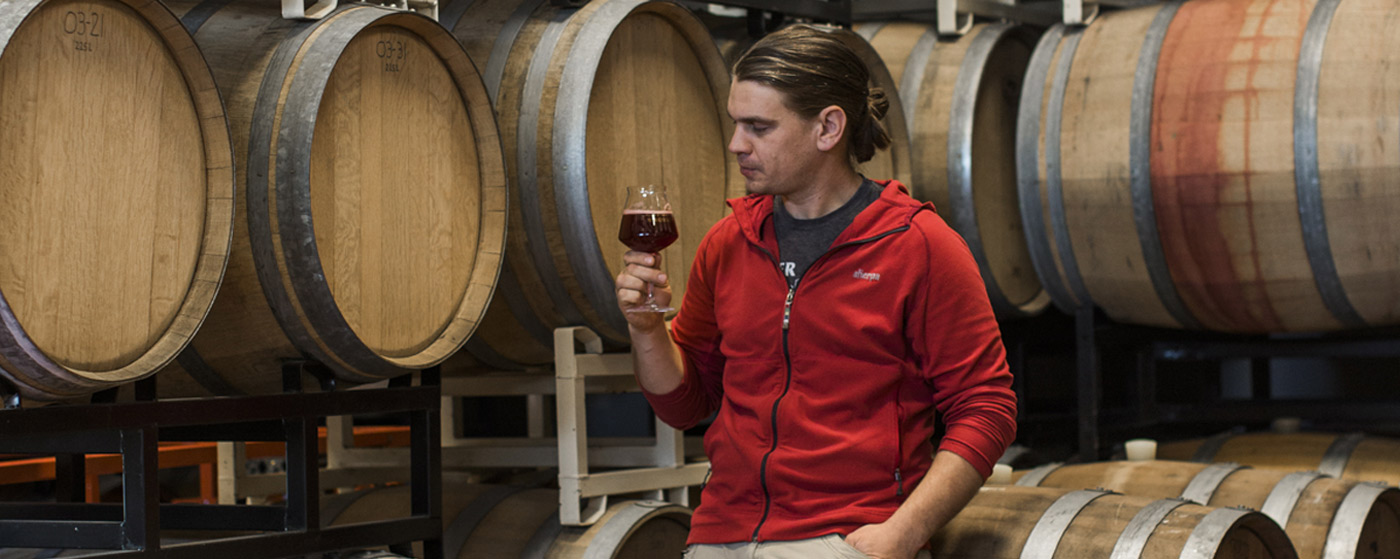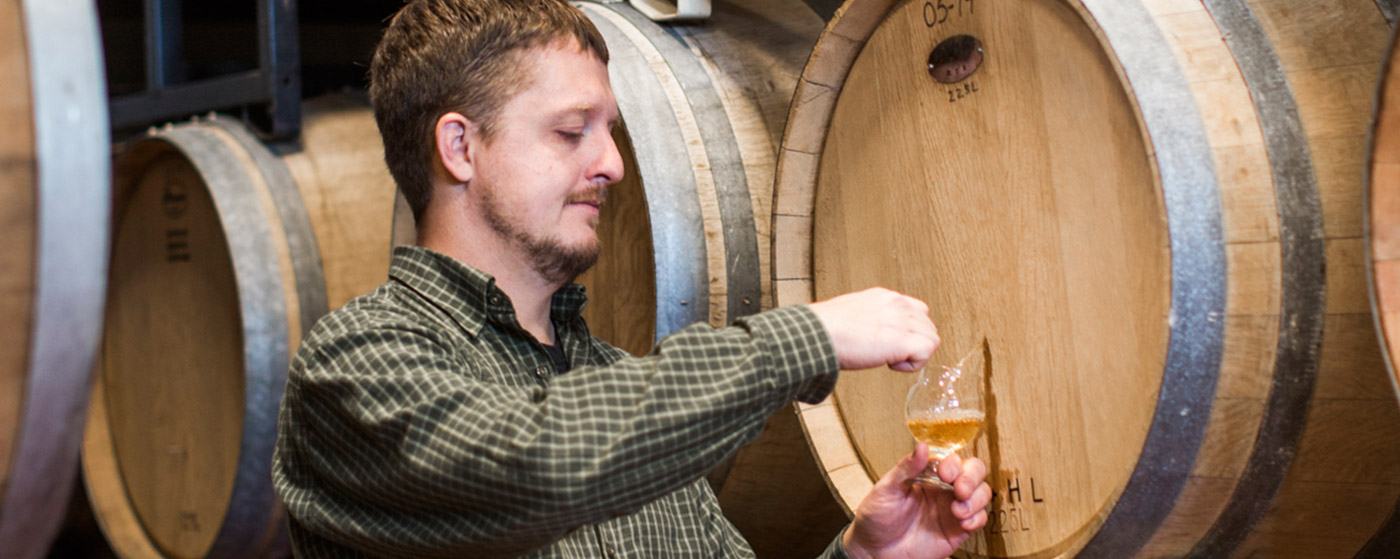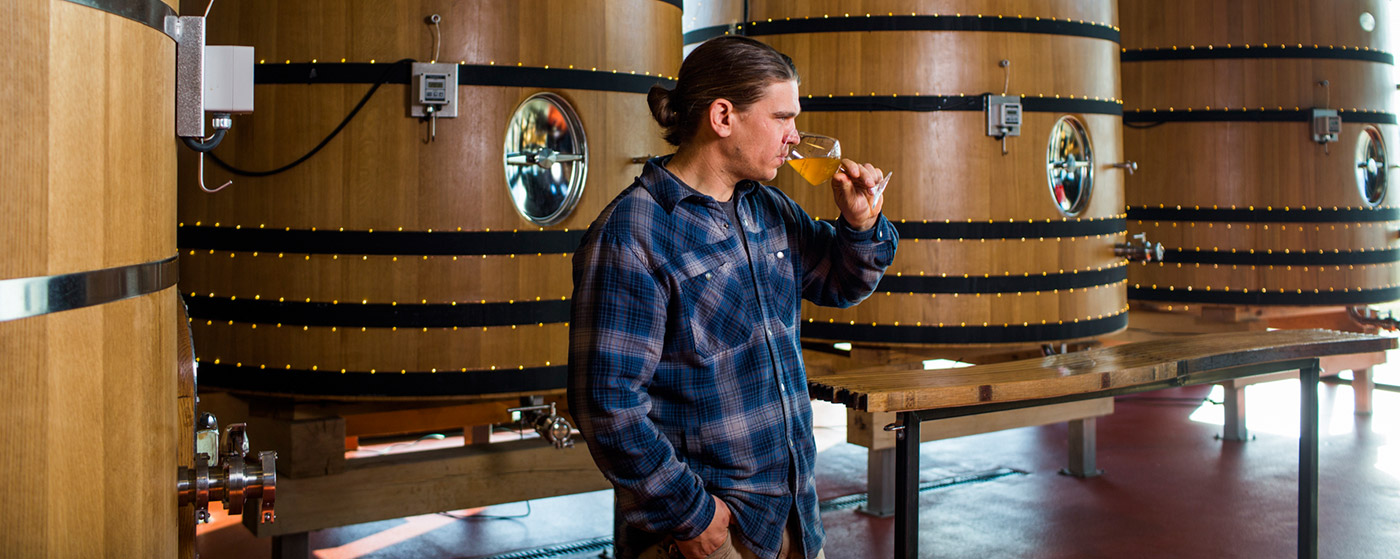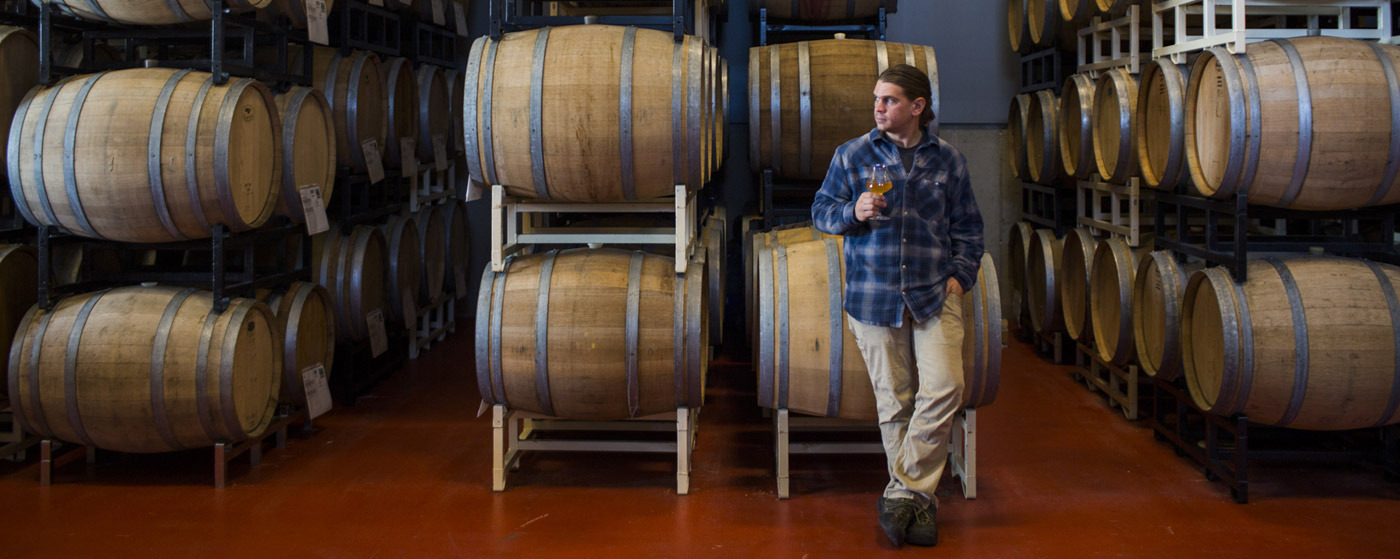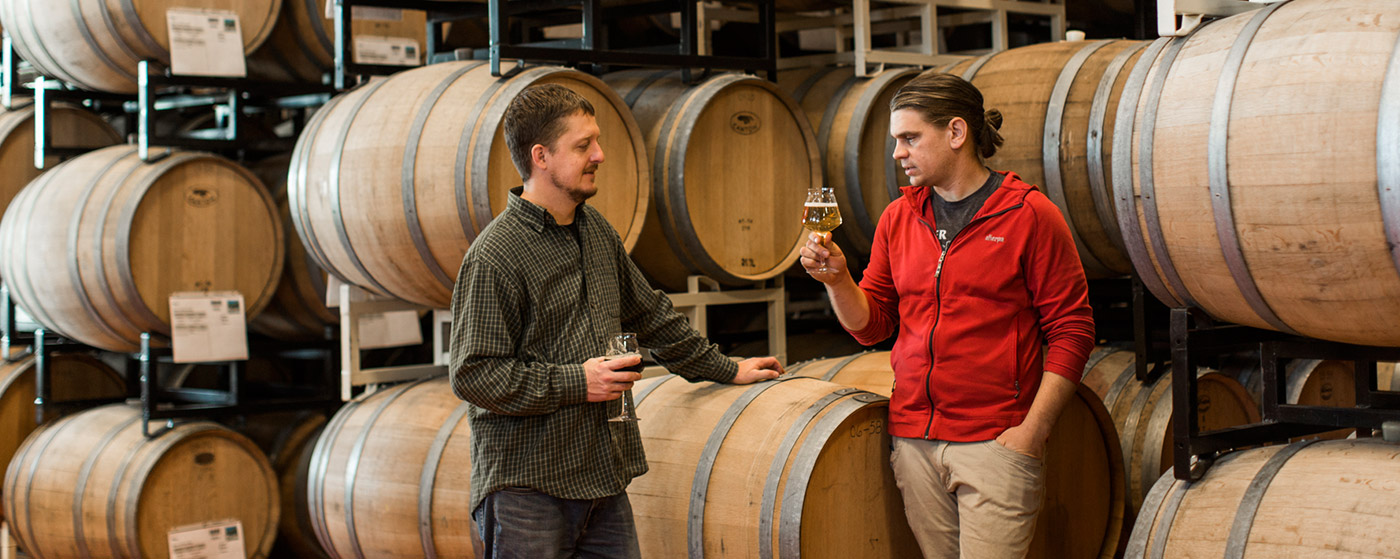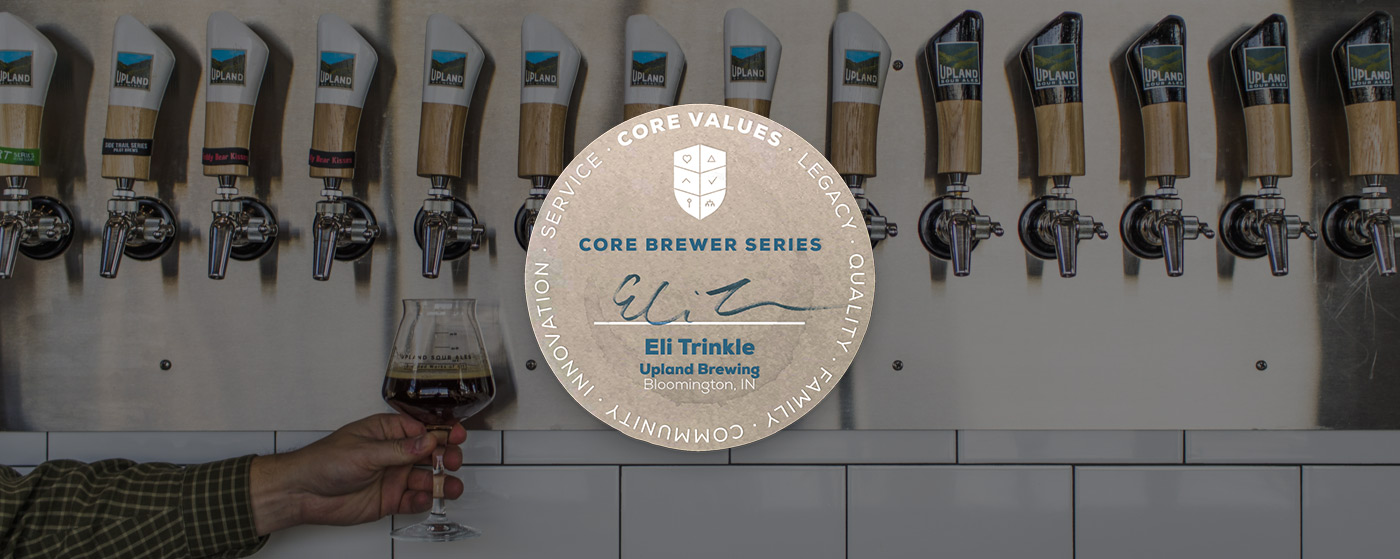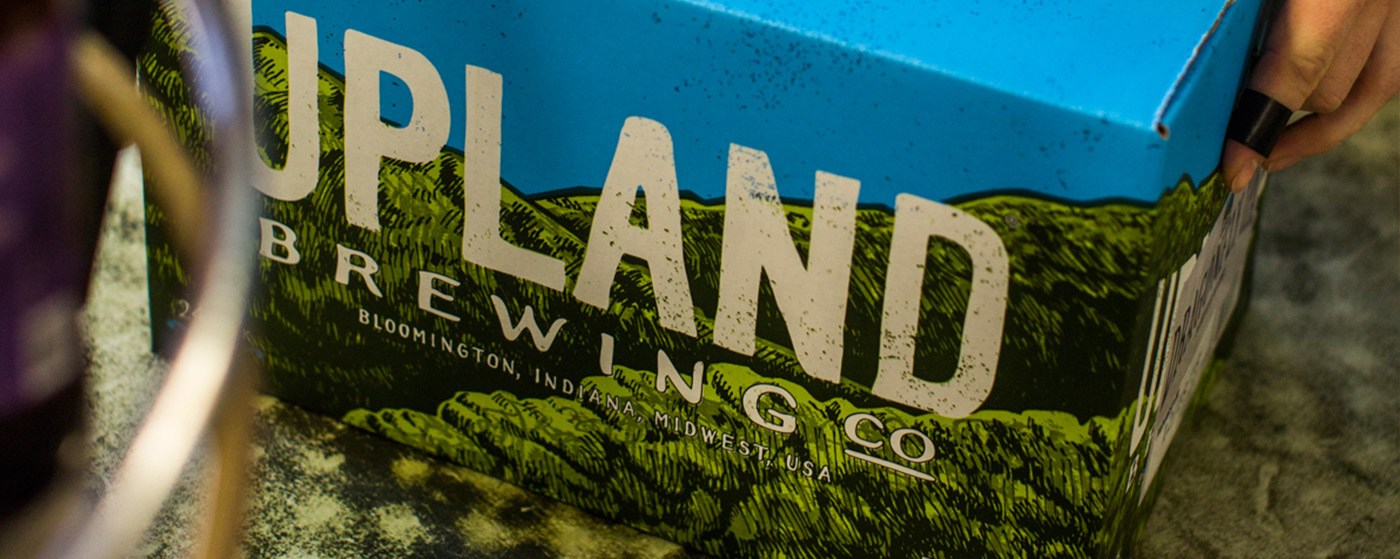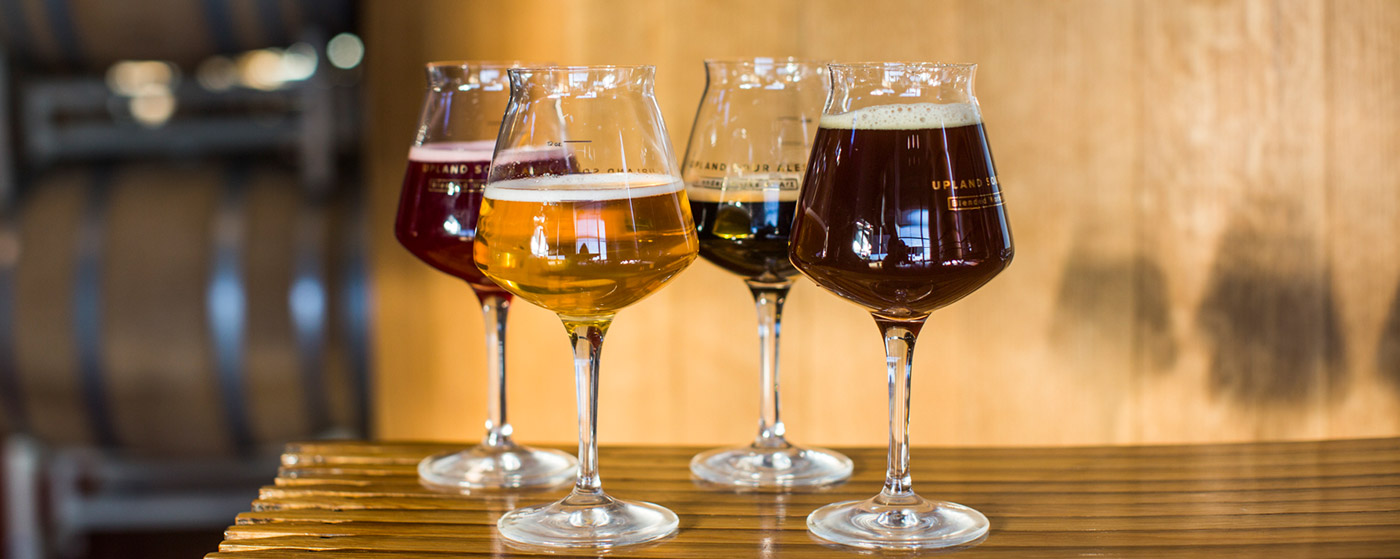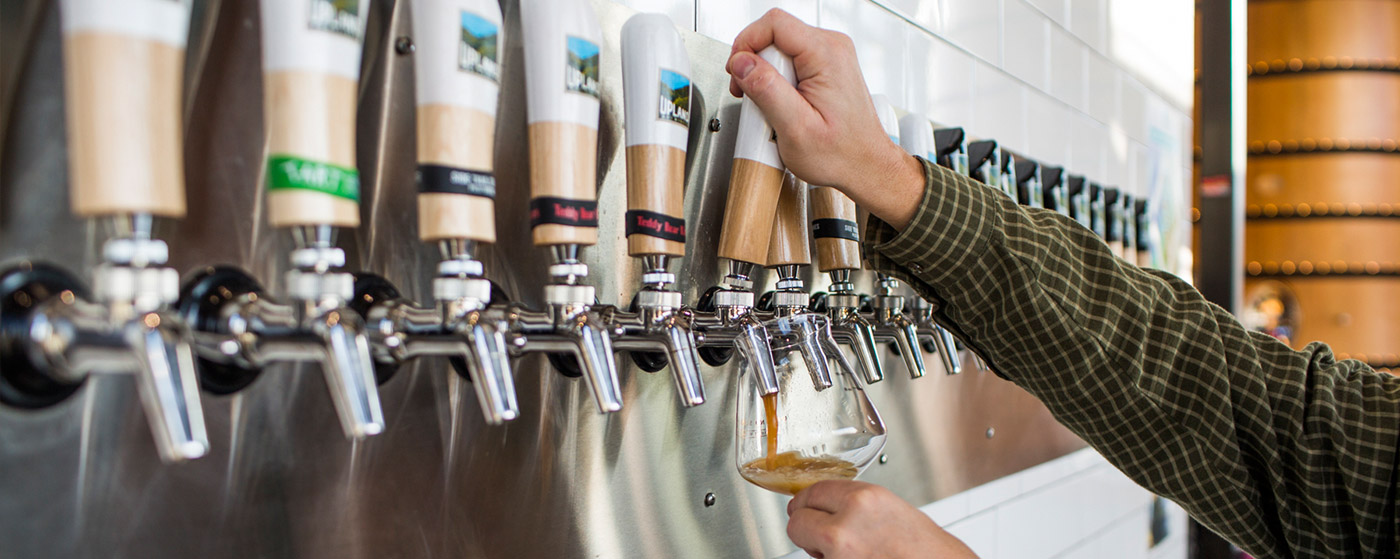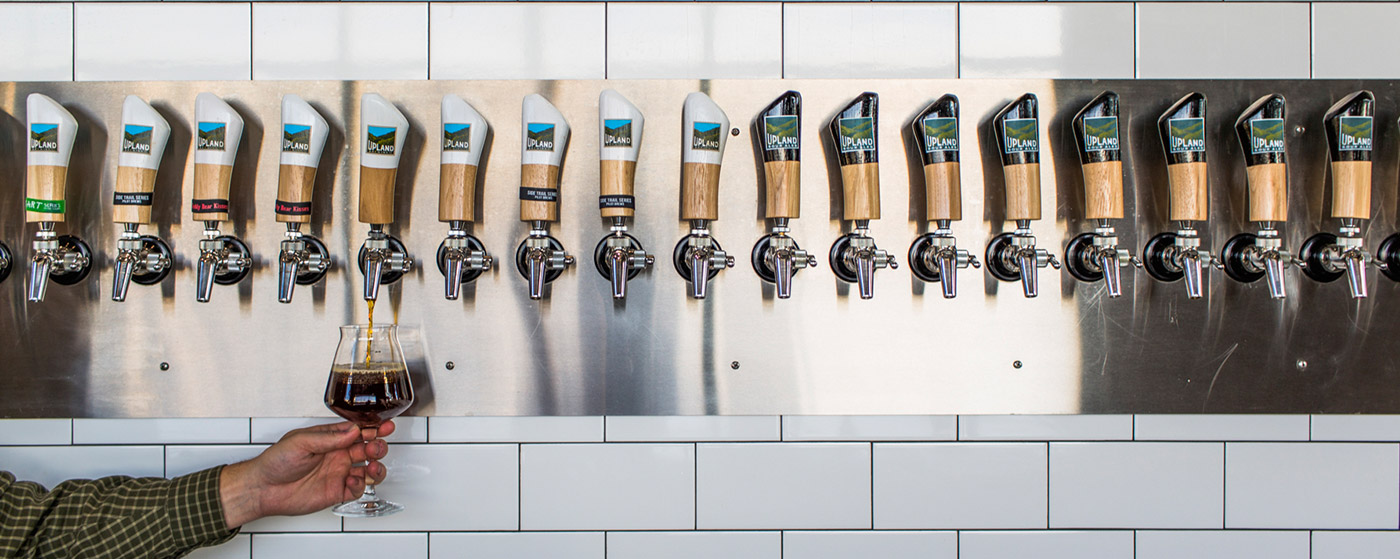Core Brewer Spotlight: Upland Brewing Company
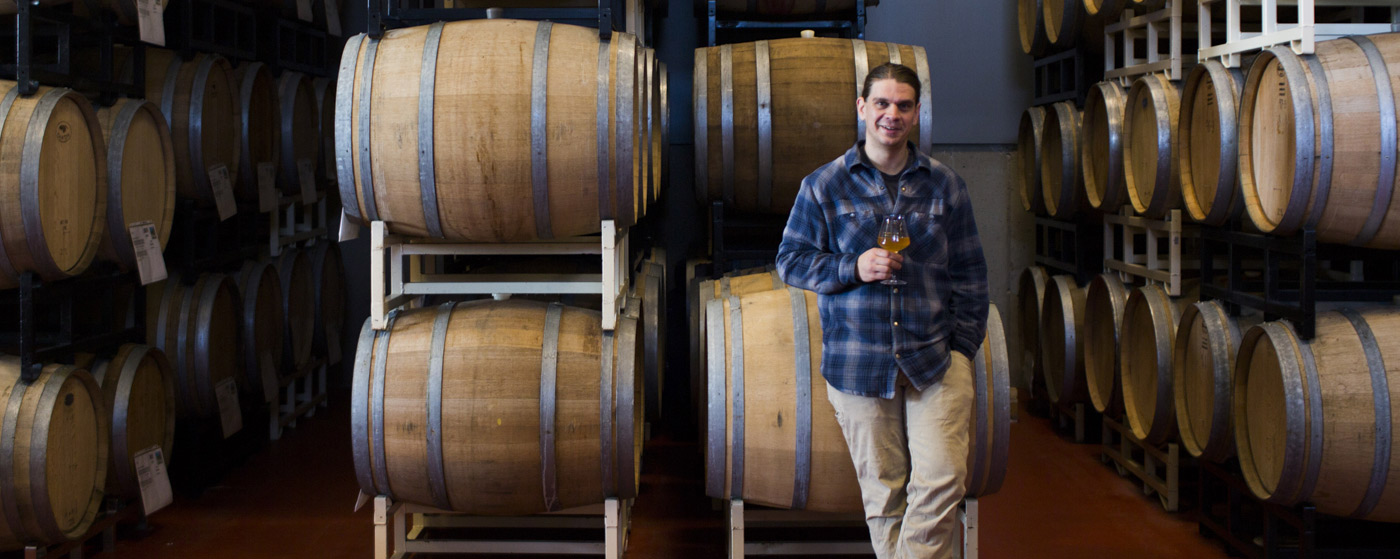
STRAIN MAGICIANS. SOUR BEER PIONEERS.
Upland Brewing Company, founded in 1997, began its legacy in southern Indiana where long-ago a rugged settler’s community, meshed with a state university to create a unique area of interest: Bloomington. To pay homage to its geographic location, founders Marc Sattinger, Russ Levitt and Dean LaPlante decided to name the brewery Upland after the term used to define the rolling hills and geological characteristics of the area.
In 1998, Upland began its distribution of bottles, kegs and formally opened its brewpub doors. It was then, that Upland began its long-standing relationship with Wyeast and has been a commercial client ever since. In 2002, Upland staked its ground in the craft brewing industry, winning Gold at the Great American Beer Festival with its flagship Wheat Ale. From that day forward, Upland has continuously been recognized for its unprecedented quality and imaginative creations. While many breweries found success appeasing trends, Upland earned their status by continuously refining their craft and entertaining their uniquely progressive ideals. When asked to describe their beers, they’ll tell you they’re brewing traditional recipes with a unique twist.
Eight years after its founding, Upland began experimenting with sour beers—a craze that had not yet taken off in the craft brewing industry. It was in 2006 that the brewing team began experimenting with lambic-style beer production in four white oak barrels that they had received in trade for 8 cases of beer. Employing techniques such as turbid mashing, using aged hops in a long boil, and fermenting in oak with organisms isolated for lambic-style beers—the Upland sour beer program was born. Supported with strains from Wyeast’s Wild & Sour collection, Upland’s roster of sour ales has earned multiple prestigious awards.
Upland takes great pride in its heritage of tradition and innovation. After more than two decades of business, six locations (soon to be seven)—one called “The Wood Shop” that is solely dedicated to producing sour ales—and an expanding network of distribution, Upland has become the third largest brewery in Indiana.
What Makes Upland Great:
- Commitment to their heritage: They’ve built a brand that pays homage to the rolling hills of their region and a community of friends, and family brought together by their quality craft beer.
- Brewing innovation: They experimented with lambic-style beer production long before the sour-beer craze had taken off.
- Loyal Wyeast customer: Since 1998 Upland Brewing has used Wyeast yeast based upon its quality, consistency and diverse strain collection.
Q&A with Upland’s Eli Trinkle, Lead Sour Brewer:
Tell us a little about yourself Eli:
- Hometown? I was born here in Bloomington Indiana, but I grew up in a small town about 40 minutes away called Cataract. Fun fact, it is home to Indiana’s largest waterfall. After high school I purchased a house in Bloomington and have been here ever since.
- We read that before pursuing brewing you earned a graduate degree. What in? I was going to a community college here in Bloomington when I was hired on as an assistant brewer at Upland. After I graduated with a degree in engineering technology the plan was to continue my education at Purdue, but since I found my career (passion), I decided to focus my time and energy on the craft.
- Why brewing? I never planned to go down the path I am on. I was introduced to homebrewing by a neighbor of mine. I was so intrigued by the process I went out the next day to our local homebrew shop and purchased a basic brewing setup. Within a month I was brewing all grain and kegging my beer. You could say it consumed my life, I became obsessed with learning everything I could about brewing. I even got a job at the homebrew shop. Lucky for me the homebrew shop was also Butler Winery. I eventually started working more out at the vineyard and in the cellar. After a few years at Butler, I decided it was time to try my hand in the brewing industry. So I applied for an assistant brewing position at Upland and have been here for the past six years.
- Favorite beer not crafted by Upland? I am a hop head, so any IPA that doesn’t have fruit or milk sugar added to it. I rarely get the same beer twice.
- How do you spend your time when you’re not brewing? I spend a lot of my time canoeing and hiking throughout the year. I also enjoy working in my garden and house projects.
- Where does your passion for sours and barrel-aged beers come from? Was there a particular beer you tried that piqued your brewing interest? Most spend their careers mastering IPAs. I think it has to do with working at the Winery. I have always enjoyed the wine making process, and making wood aged sours is very similar to wine after the brewhouse. I have also always liked working with wood. Unlike stainless, there is a lot of care that has to go into maintaining a barrel or foudre.
- What was the first sour you tried? The first sour I had was our Blackberry sour ale. This was a few years before I started working for Upland. I had just started to drink kombucha and someone recommended I try sour beer. I have been hooked ever since.
- Proudest moment? This year we were fortunate enough to take home two gold medals. World Beer Cup for Raspberry from our sour brewery and GABF for Two of Tarts Gose from our Core Brewery. Really proud of our team at both breweries.
Q&A with Upland’s Pete Batule, COO & Director of Brewing Operations:
Tell us a little about Upland:
1. At Wyeast we experienced a big surge of interest in our Wild & Sour collection just a few years ago – well after Upland’s program was established. What challenges existed when these styles were less common?
There was a lot of education both for us as a brewery and for our local customers. It took us years to get our blends and consistency right. Few people had even heard of the Lambic-style or a wild/sour beer at all and there were not too many American examples in the market at the time.
2. Do you feel like there are aspects of Upland’s sour program that helped the US sour beer market mature to where it is today? Anything you’re especially proud of?
When we started, we were just trying to emulate the great beers that have been produced in Belgium for so many years. I think we’ve made a lot of progress with quality and consistency and achieving balance in the beer. We’ve taken home a handful of medals which sometimes help to validate we’re doing a few things the right way.
3. What has made your sour program so successful? What differentiates your sours from others?
We continue to experiment with non-traditional ingredients and techniques. For example, early on we introduced a lambic-style beer aged on Kiwi. We were curious and had never seen or tried a beer like that and it ended up being one of our most popular beers. Continuing to stay curious and experimental will always be a part of our program.
4. We read you’ve paired up with Oliver Winery to create Vinosynth beers. Can you explain what they are?
We initially began our collaboration with Oliver when we needed barrels for our program. Shortly after that, we decided to partner up again to use grapes grown in their vineyard which we now call our Oak and Vine series. We release 3 beers annually Oak & White, Oak & Red, and Oak & Rose. Each beer is aged on whole grapes for 3 months for refermentation and is a wonderful representation of the grape and fun to taste beside the wine. We have used many different grape varietals over the years, but most recently we’ve used Vidal Blanc, Chambourcin, and Catawba.
5. Bloomington is an integral part to the Upland brand and legacy. As Upland locations and distribution expands to other states, what message about Bloomington do you hope is not lost?
The name of our brewery was inspired by the land that surrounds us and so much of what we do is inspired by supporting our local communities and agriculture. Most of the fruits we use in our sour program are sourced in the Midwest and our culinary programs are very focused on supporting local farmers and purveyors. Sustainability, innovation, and quality are what I would say have been a big part of our story so far, and we plan to keep focusing on those values as we brew for another 20 years.
6. It’s apparent that Upland is committed to honoring its brewing heritage. We see it in your product. We know it to be part of your process. And it’s illustrated in your branding. Tell us a little about the Champagne Velvet project and what this beer means to fellow Indianians.
Champagne Velvet (CV) was an Indiana favorite started back in 1902 by the Terre Haute Brewing Co. Wildly popular, CV became the brewery’s flagship beer—spreading Terre Haute’s market and fame over two decades before Prohibition forced them to close. However, rather than letting this popular beer die, CV has been resurrected and changed several times over the years. And while modern brewing practices have required the recipe to be recreated in more modern, closed-vessel fermenters, the goal has always been to stay as close to the original as possible. In 2012, when Upland was celebrating 15 years, we wanted to pay tribute to Indiana brewing heritage by making the infamous Champagne Velvet ourselves. The challenge was to take the vague information provided in the recipe we bought and create a modern interpretation that would be as true to the original style as possible. Luckily, after 30 test batches we reached a formula that we thought worked. And the public agreed, responding favorably after we launched it on our fifteenth anniversary. Since that original CV launch, we’ve continued to adapt the recipe, making it an even bigger tribute to Indiana brewing heritage. Even the packaging exudes a post-Prohibition era label, which includes the slogan “Million Dollar Taste” — a nod to the brewery that had a $1 million insurance policy on the recipe. This nostalgic beer has become a best-seller for us.
7. Upland is known for its quality. Can you tell us what that quality assurance testing looks like?
For us, quality has been all about continuous improvement. Our program started with our first lab tech, Adam Covey, who has been steadily improving our quality program since 2007. It really started with making sure our beer was clean and free from contamination so we started with a micro program then evolved into sensory evaluation, then in-process and finished product testing.
8. Upland has been a loyal customer of Wyeast since 1998. What were some of the reasons that Wyeast was a good fit as one of your early suppliers? How have our products influenced your beers?
There’s a ton of innovation going on in the craft beer industry. Consumers are always craving “new” and we’re always eager to be adventurous. When experimenting with new recipes it’s important to use a quality yeast that is extremely consistent. Since the beginning, Wyeast’s product has always been consistent and their strain collection has always been diverse. These qualities are imperative to our experimentation and the primary reasons we’ve worked with Wyeast for so many years.
{"slide_to_show":"1","dots":true,"arrows":false,"autoplay":true,"autoplay_interval":"3000","auto_height":true,"speed":"300","loop":true,"margin":"10","stagePadding":"0"}
A Toast To Upland:
At Wyeast, we’re proud to support Upland’s commitment to beer innovation and can relate to their passion for the place they call home. CHEERS to a valued partner creating a wild and rooted beer-making legacy.
CHEERS!
Follow Upland Brewing Company:

